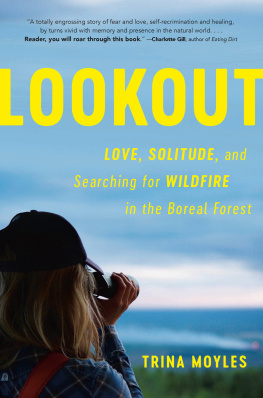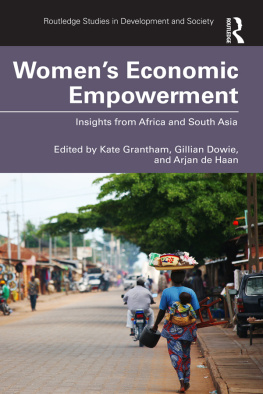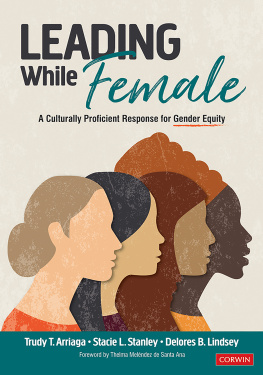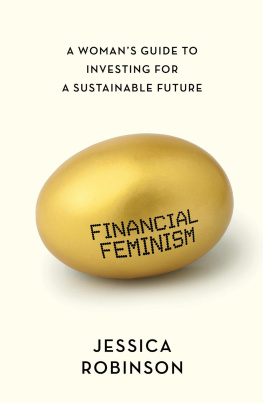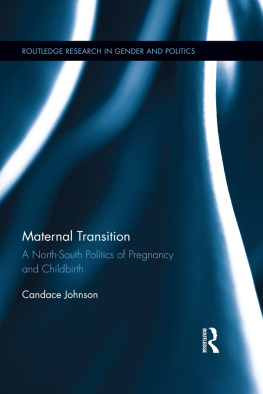WOMEN
WHO DIG
WOMEN
WHO DIG
FARMING, FEMINISM,
and the FIGHT
TO FEED THE WORLD
Trina Moyles
photographs by KJ Dakin
2018 Trina Moyles
All rights reserved. No part of this work covered by the copyrights hereon may be reproduced or used in any form or by any meansgraphic, electronic, or mechanicalwithout the prior written permission of the publisher. Any request for photocopying, recording, taping or placement in information storage and retrieval systems of any sort shall be directed in writing to Access Copyright.
Printed and bound in Canada at Marquis. The text of this book is printed on 100% post-consumer recycled paper with earth-friendly vegetable-based inks.
Cover and text design: Duncan Campbell, University of Regina Press
Copy editor: Marionne Cronin
Proofreader: Kristine Douaud
Cover art: Woman Cutting Grass by pixelfusion3d /iStockphoto.
Library and Archives Canada Cataloguing in Publication
Moyles, Trina, author
Women who dig : farming, feminism, and the fight to
feed the world / Trina Moyles ; photographs by KJ Dakin.
Includes bibliographical references.
Issued in print and electronic formats.
ISBN 978-0-88977-527-5 (softcover). ISBN 978-0-88977-528-2 ( PDF ). ISBN 978-0-88977-529-9 ( HTML )
1. Women farmers. 2. AgricultureSocial aspects. 3. Feminism.
I. Title.
HD6077.M69 2018 338.1082 C2017-907459-8
C2017-907460-1
University of Regina Press, University of Regina Regina, Saskatchewan, Canada, s4s 0a2 tel: (306) 585-4758 fax: (306) 585-4699 web: www.uofrpress.ca
We acknowledge the support of the Canada Council for the Arts for our publishing program. We acknowledge the financial support of the Government of Canada. / Nous reconnaissons lappui financier du gouvernement du Canada. This publication was made possible with support from Creative Saskatchewans Creative Industries Production Grant Program.
CONTENTS
R
For my parents, Linda and Dave
PREFACE IX
Preface
T hese stories are not mine. Over the past three years, they were generously shared with me by women and men, sto- ries spoken aloud in more than ten different languages on three continents, stories broken like breadmemories, sorrows, and hopesand passed across the table. Without the stories of more than women who shared their experiences with me, this book would not exist. A thousand times over, thank you. Gracias. Mwebare. Chjonte. Merci. Nandri. Asante. My deepest gratitude for inviting me into your homes and gar- dens, for teaching me, for shaping the ideas held in these pages, and for entrusting me with your stories. Every word was a gift. Stories are wondrous things, wrote Canadian author, Thomas King, in his book The Truth About Stories. And they are also dangerous. For that last reason, I have chosen to change the names, locations, and attributes of many of the women whose stories grace these pages in order to protect their identities.
I also want to acknowledge the support of the grassroots community organizations that are working hard to support the efforts of small-scale farmers. These organizations were essential to my ability to create sensitive ways to connect with women farmers in the places where I traveled. Im indebted
X PREFACE
to these organizations for their willingness to lead me up and down dirt paths and to find meaningful pathways to capture narratives about women who dig, sow, and feed the world. Im in awe ofand in solidarity withyour continued struggle for social and environmental justice.
INTRODUCTION XI
Introduction
M y great-grandmother, Eleanor, boarded a steamboat with her husband, David, and their two sons, John and Des- mond, in 1925. She waved goodbye to Irelands rocky shores, to the rolling green pastures, and to the stone- strewn farmland. They abandoned the marshy flats of Mount Mellick, a tiny village located in the geographical centre of Ire- land where her husband was born. Ireland was a country that no longer wanted them. David had served the British Empire as an officer for the Irish Guard, for which the Irish separatists despised him. But beyond the fire that was smoldering between the British separatists and loyalists, my great-grandparents left Ireland because there was scarcely any land left to farm. David was the youngest boy amongst his four siblings. His father, a poor potato farmer, had nothing to offer his son. David inherited the knowl- edge of farming, but when it came to land, he only had rocks.
Eleanor and David fled their mother country and crossed the Atlantic in pursuit of what was called free land on the vast spread of the Canadian prairies. My great-grandfather fought in WWI , and under the Soldiers Land Settlement Act of 1919 the British Empire offered him a loan to immigrate to Canada, settle on a quarter section of land outside Wolseley,
XII WOMEN WHO DIG
Saskatchewan, and sow wheat where the native prairie grasses once sprang from the earth. They traveled in winter, before the thaw and fertile promise that spring brings. When they arrived, Eleanor could not believe her eyes. The door to the farmhouse, a wooden clapboard structure, was wide open. The snow had accumulated inside the house like a massive heap of sugar. David handed her a shovel and they began, digging in, carving out a new life on the land only ten kilometres south of the QuAppelle Valley.
The story behind the naming of the QuAppelle River and Valley reveals that my great-grandparents were not the first people called to settle on the Canadian prairies. In 1804, Daniel Harmon, a Mtis fur trader, paddled along the river and encountered a group of Cree hunters. The hunters told Harmon that a Cree spirit possessed the river, floating along the sur- face of the black waters, crying out in Cree, K-tpwt? Qui appelle?, meaning Who is calling? In 1852, the Hudsons Bay Company established a fur trading post along the QuAppelle River, and seventy years later, the forces of colonialism called my great-grandparents to the land that had never belonged to the Canadian government to sell.
For ten thousand years before David and Eleanor came, Indigenous communities lived in spiritual communion with the land without owning the land. Land ownership did not always align with Indigenous cosmologies: land was the foundation for the life force; it could not be owned, but it was known, navi- gated, and managed in complex ways, according to each groups traditional ecological knowledge and understanding of geog- raphy, botany, wildlife, weather, and the seasonal changes. The Blackfoot, the Assiniboine, the Dene, the Cree and Saulteaux, and Mtis peoples, amongst many other Indigenous groups in the west, were hunting and gathering peoples who depended on the earth in diverse ways: harvesting roots, berries, bark, and wild plants, and hunting moose, elk, deer, bear, and wood- land caribou. Many Indigenous groups on the prairies followed the migratory paths of buffalo throughout the expanse of what would come to be known as western Canada.
Next page

